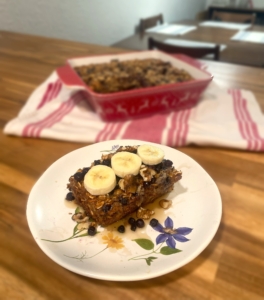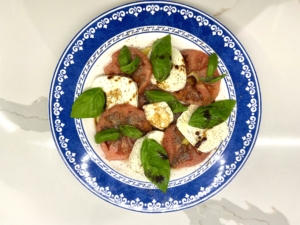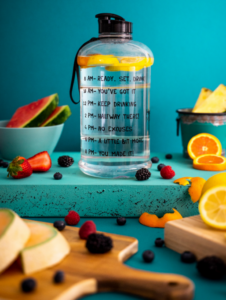How to Fit in More Fruits and Veggies This Summer (Without Overthinking It)
How to Fit in More Fruits and Veggies This Summer (Without Overthinking It)
Summer is the perfect time to refresh your eating habits—and what better way than loading up on fruits and vegetables? With farmer’s markets in full swing and grocery shelves overflowing with seasonal produce, eating more plants can feel less like a chore and more like a treat. The key? Keep it simple, fresh, and fun.
1. Shop What’s in Season
Start by choosing fruits and veggies that are naturally at their best this time of year. Think tomatoes, cucumbers, berries, peaches, corn, zucchini, and watermelon. Not only do they taste better, but they’re usually more affordable when in season. Visit a local farmer’s market or explore the produce section with an open mind—you might discover a new favorite. Check out Banister Nutrition’s social media pages on Instagram and Facebook to get a look at monthly produce in season.
2. Make It Easy to Grab and Go
Prepping your produce makes a huge difference. Wash, chop, and store fruits and vegetables in clear containers so they’re easy to grab when hunger strikes. A bowl of cut-up melon, carrot sticks, or snap peas in the fridge makes it an easy option!
3. Upgrade What You’re Already Eating
You don’t have to reinvent every meal. Add spinach or tomatoes to your morning eggs. Top sandwiches and burgers with lettuce, onion, or grilled zucchini. Toss berries into your yogurt or cereal. Stir chopped greens into pasta or rice. Small changes add up quickly.
4. Go for Grilled
Fire up the grill and add veggies to the mix! Peppers, mushrooms, corn, and eggplant all take on a new flavor profile when grilled. Pair them with your favorite protein, or even make them the star of the plate.
5. Blend It or Freeze It
Smoothies are a summer staple for a reason. Blend up frozen bananas, spinach, berries, and a splash of almond milk for a refreshing, nutrient-packed treat. You can even pour the smoothie into molds for DIY fruit & veggie popsicles—great for kids and adults alike.
Bottom Line:
Fitting more fruits and vegetables into your summer doesn’t have to be complicated. With a little planning and some seasonal inspiration, you can enjoy more fresh flavor while fueling your body with what it craves. 🌽🍓🥗

 2 beaten eggs
2 beaten eggs



 your body burn calories.
your body burn calories.
 st first. I know it’s tempting to grab the freshest one however when it comes to food waste we’re doing ourselves a disservice for minimal flavor difference.
st first. I know it’s tempting to grab the freshest one however when it comes to food waste we’re doing ourselves a disservice for minimal flavor difference.